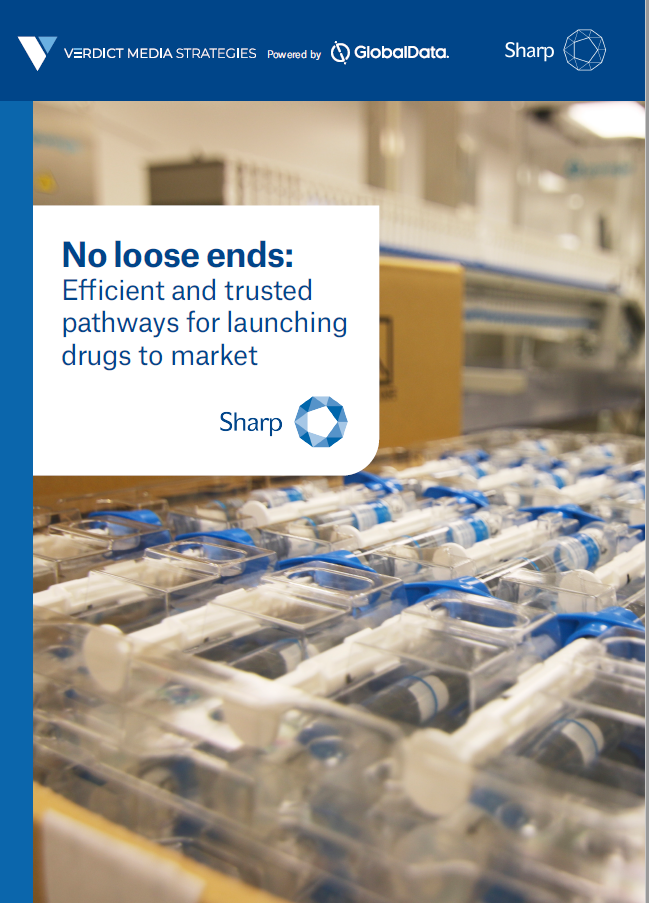There have been many conferences and publications on cold chain temperature management logistics over the last 10 plus years, and for very good reason. In general, most cold chain pharmaceuticals are more fragile than room temperature pharmaceuticals, thus control of their environment throughout the entire supply chain is critical to maintain product quality and efficacy. In contrast, the handling of room temperature pharmaceuticals is less controlled, and indeed many regulations and guidances have allowed for flexibility in their handling.
I first considered a more rigid approach to room temperature product distribution about 15 years ago when a study site coordinator contacted me to let me know that it gets quote cold in northern Minnesota in the winter. They went on to suggest the quality of our investigational tablets may be compromised, as we were shipping in essentially cardboard boxes. While the product in question was very stable and showed no signs of degradation on very rigorous stability studies, there was no freeze thaw data on the product. This was the point when I started to transition from cardboard boxes, with no temperature monitoring devices for room temperature products, to the use of passive controlled temperature shippers with temperature monitors.
Over the years, I started to take informal polls at various clinical supply conferences, and what I saw was a steady increase in the number of companies making a similar transition to ship all clinical supplies in controlled room temperature. I believe today, this has now become an industry standard. In recent clinical site inspections, I have been asked to supply temperature excursion data for any excursion that occurred. When one considers the cost and efforts to execute a clinical study, and the potential risk to the trial due to loss of investigational product quality, it really makes sense to adopt these distribution practices.
Regulatory Considerations
USP <659>Packaging and Storage Requirements are very precise for frozen (-25° to -10°C) and refrigerated (2 to 8°C) pharmaceuticals, as well as even cool conditions (8 to 15°C), warm conditions (30° to 40°C), and excessive heat (>40°C). However, the definition of controlled room temperature (CRT) is a more complex situation. The USP definition starts out with a clear range stating CRT is “the temperature maintained thermostatically that encompasses the usual and customary working environment of 20°–25°C.”
However, then the definition goes on to list a variety of caveats that create confusion.There are various interpretations that have prevented clear delineation of distribution practices even within a single company: “Excursions between 15° and 30°C (59° and 86° F) that are experienced in pharmacies, hospitals, and warehouses, and during shipping are allowed. Provided the mean kinetic temperature does not exceed 25°C, transient spikes up to 40° are permitted as long as they do not exceed 24 hours. Spikes above 40° may be permitted only if the manufacturer so instructs.”
How well do you really know your competitors?
Access the most comprehensive Company Profiles on the market, powered by GlobalData. Save hours of research. Gain competitive edge.

Thank you!
Your download email will arrive shortly
Not ready to buy yet? Download a free sample
We are confident about the unique quality of our Company Profiles. However, we want you to make the most beneficial decision for your business, so we offer a free sample that you can download by submitting the below form
By GlobalDataSee Also:
USP <659> also allows for wide flexibility on how drugs should be labeled as long as the mean kinetic temperature is maintained between 20 to 25°C. Indeed, a large variation can be seen in the industry if one were to compare room temperature commercial pharmaceutical labels. The most common label wording being “20 to 25°C; excursions permitted to 15° to 30°C [see USP CRT]” which clearly articulated the USP definition.
However, other room temperature label wording vary from this language considerably, sometimes citing a single temperature (for example 25°C) or below a single temperature (for example <25°C) or a variety of different temperature ranges going as wide as 2 to 30°C. Some companies have chosen not to refer to USP CRTin their labeling. This makes it difficult when transporting comparator products for use in a clinical study since allowable excursions defined in the USP may not be useable.
The Ambiguity of USP Guidelines
In a stimuli article that appeared in the November-December 2013 issue of USP Pharmacopeia Forum, a proposal was made to expand the range of CRT from 20° to 25°C to a considerably wider range of 2° to 30°C when appropriate for specific products. In response to public comment generated by the article, the USP formed an Expert Panel under the auspices of the Packaging Storage & Distribution Expert Committee. The committee aimed at making recommendations for changes to chapter <659> with particular attention given to the definition of CRT.
USP<1079>Good Storage and Distribution Practices for Drug Products does offer more clarity as to how one might better define their distribution practices for CRT products. “The container used for transporting the drug product should be qualified on the basis of the labeled conditions of the product as well as anticipated environmental conditions.” In terms of temperature monitoring, USP<1079> later goes on to state: “Drug product transport systems should be continuously monitored by calibrated monitoring systems, (continuous verification), or shipping systems should be qualified and based on historical data relative to the process.” However, it then goes on to offer similar level of caveats found in USP <659> in stating: “it may be acceptable use of product stability data and supply chain risk assessment to justify shipping without either continuous monitoring or qualification of the shipping system.”
Some of the ambiguity from the USP guidelines can be better clarified when one considers the EU Guidelines on Good Distribution Practice of Medicinal Products for Human Use. It states: “The required storage conditions for medicinal products should be maintained during transportation within the defined limits as described by the manufacturers or on the outer packaging. If a deviation, such as a temperature excursion or product damage has occurred during transportation, this should be reported to the distributor and recipient of the affected medicinal products. A procedure should also be in place for investigating and handling temperature excursions.” The WHO Good Distribution Practices for Pharmaceutical Products also provides a more defined set of distribution practices.
Best Practices for the Distribution of Pharmaceutical Products
All investigational products, as well as commercial products being used in a clinical study, should be shipped in controlled temperature shippers with temperature monitors. This will greatly reduce the time and expense of managing temperature excursions; prevent loss of product due to excursions; and lastly, prevent a critical finding during an inspection because the drug was not adequately controlled throughout its supply chain.
Consider creating a temperature excursion profile with your quality group that pre-defines several levels of excursions:
- Level 1: No temperature excursion, drug maintained at its labeled storage condition
- Level 2: The acceptable temperature excursions that do not need any follow-up investigation
- Level 3: The temperature excursions that might consider some quality input or investigation
- Level 4: The temperature excursions where product should be rejected
Having this temperature excursion profile determined prior to study start will allow timely dispensation of any shipments that have temperature excursions.
For room temperature products, consider setting these excursion levels based on both stability data for your product as well as the conditions outlined in USP <659>. For example, first level normal shipping conditions would be set to either 20 to 25°C or 15 to 25°C, depending on how your company defines CRT. Any shipments within this first level would be within labeled storage conditions.
A second level alarm would be set to 8 to 15 or 20°C and 25 to 30°C. A pre-determined acceptable time for these excursions might be defined rather long to cover any shipment durations of perhaps three to five days.
A third level alarm would be set to 2 to 8°C and 30 to 40°C and one might consider a pre-determined time of less than 24 hours or choose to investigate these as each excursion occurs. When time levels are exceeded in either the second or third alarm levels, these would either be investigated on a case by case basis or chosen to reject the shipment once the time is exceeded. The same is applied to the last alarm level that is set to any time less than 2°C or greater than 40°C.
In all alarm situations, these excursions and their dispositions should be documented and temperature data retained in case needed for inspections. One may consider storing all temperature data whether good or bad. Finally, when possible, try and automate the excursion management process. If an IRT (Interactive Response Technology) is being utilized, consider using this system to automate some of the decision making and integrating with the temperature monitor to facilitate the downloading and storage of the temperature data. When the IRT system is archived at the end of the study, be sure to capture this data so it is available for any inspections.
Russell Brierley
Director of Clinical Supply
Lupin Research Inc.
*The views and opinions expressed by the author are theirs alone and do not reflect any official views of Lupin Research, Inc.
Further Reading:
1) USP Pharmacopeia Forum, USP Controlled Room Temperature Range Expansion, Desmond G Hunt, Chris Chandler, David A. Ulrich, Richard Poska, and Arminda Monteroc, November-December 2013 issue,
2) USP 38chapter <659>Packaging and Storage Requirements
3) USP 28 chapter <1079>Good Storage and Distribution Practices for Drug Products
4) EU Guidelines of Nov. 5, 2013 on Good Distribution Practice of Medicinal Products for Human Use (2013/C 343/01)
5) WHO, Good Distribution Practices for Pharmaceutical Products World Health Organization, WHO, Technical Report Series, No. 957, 2010








